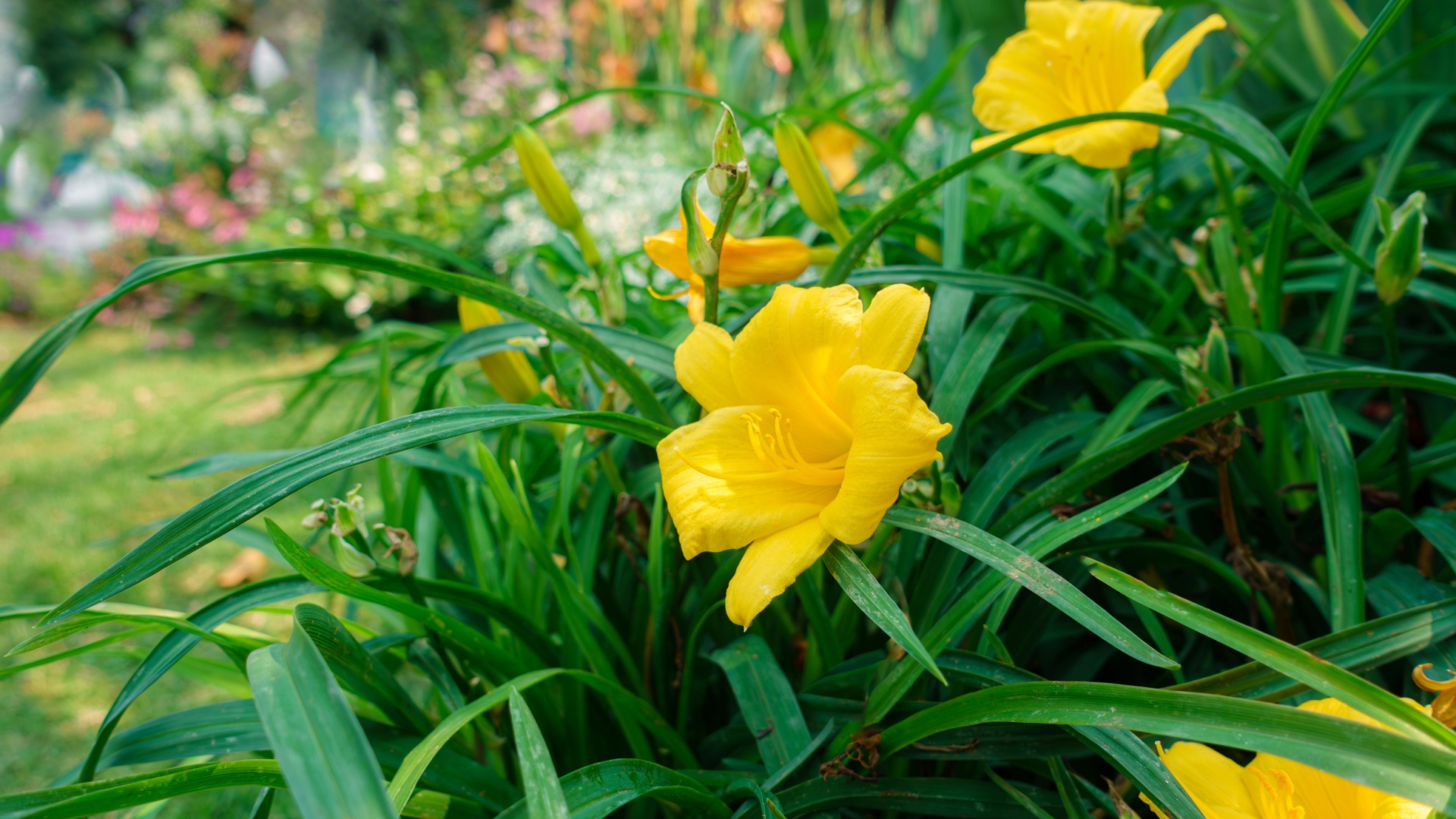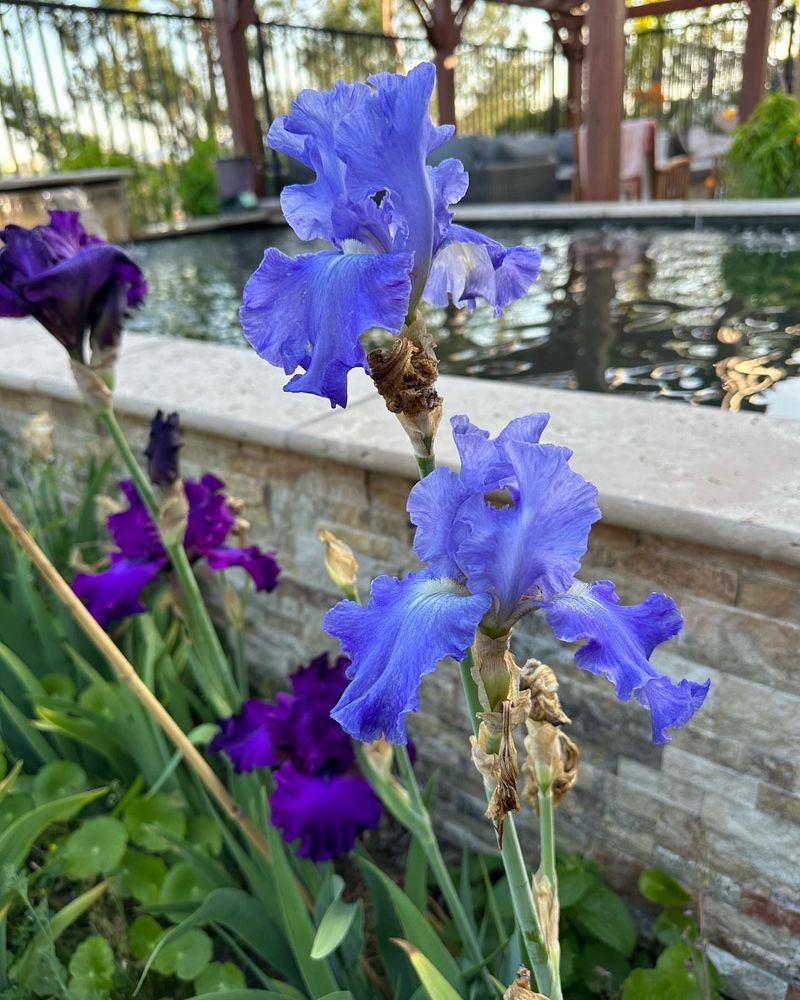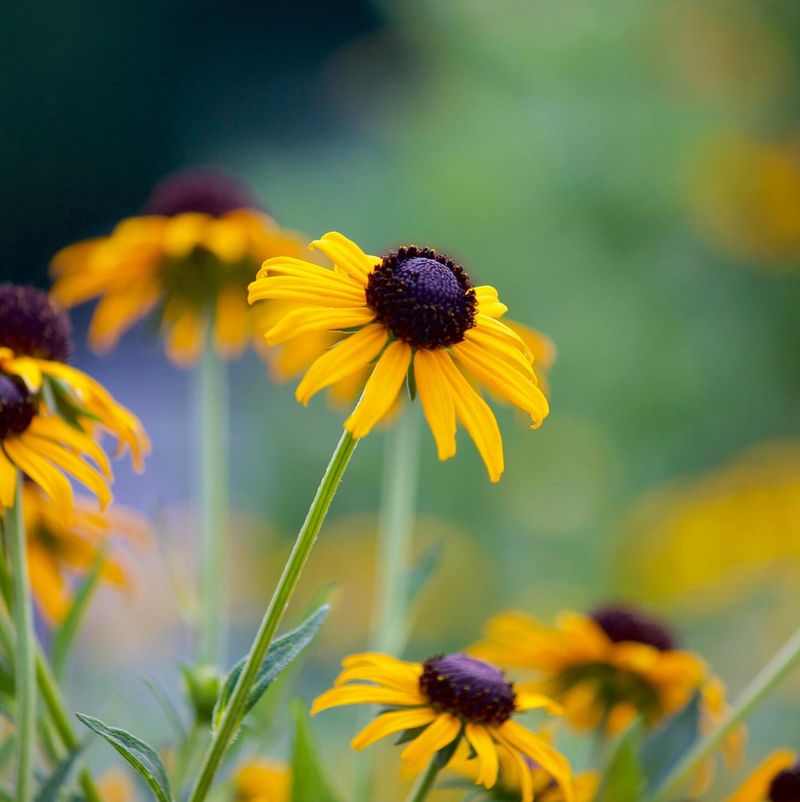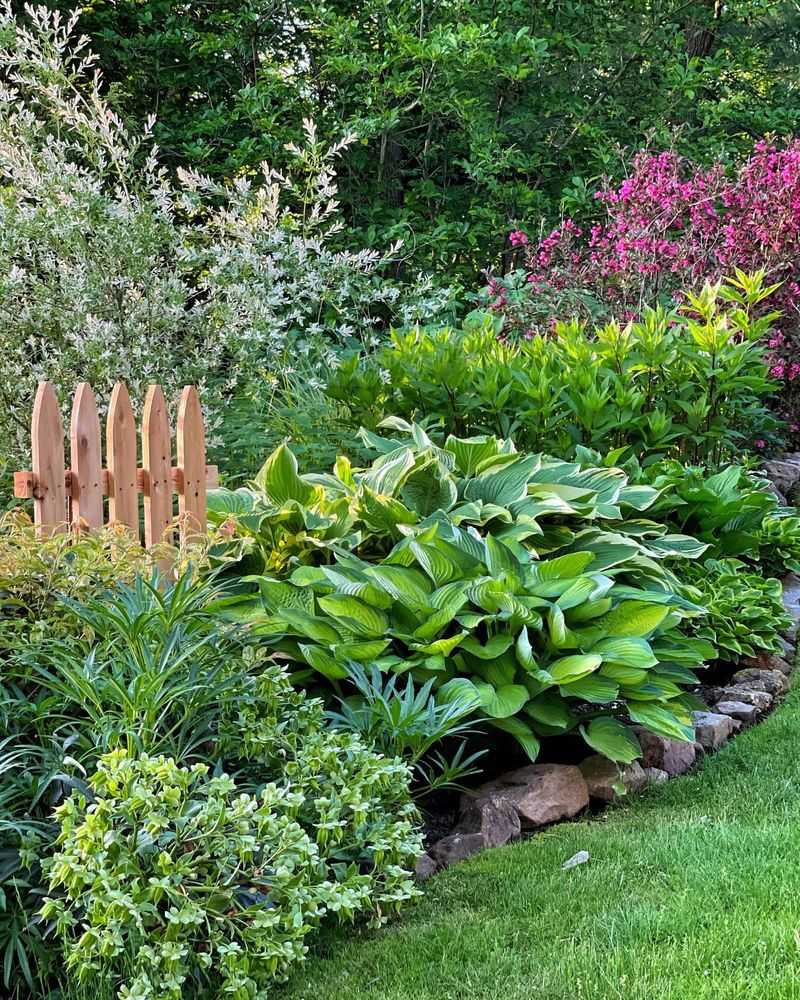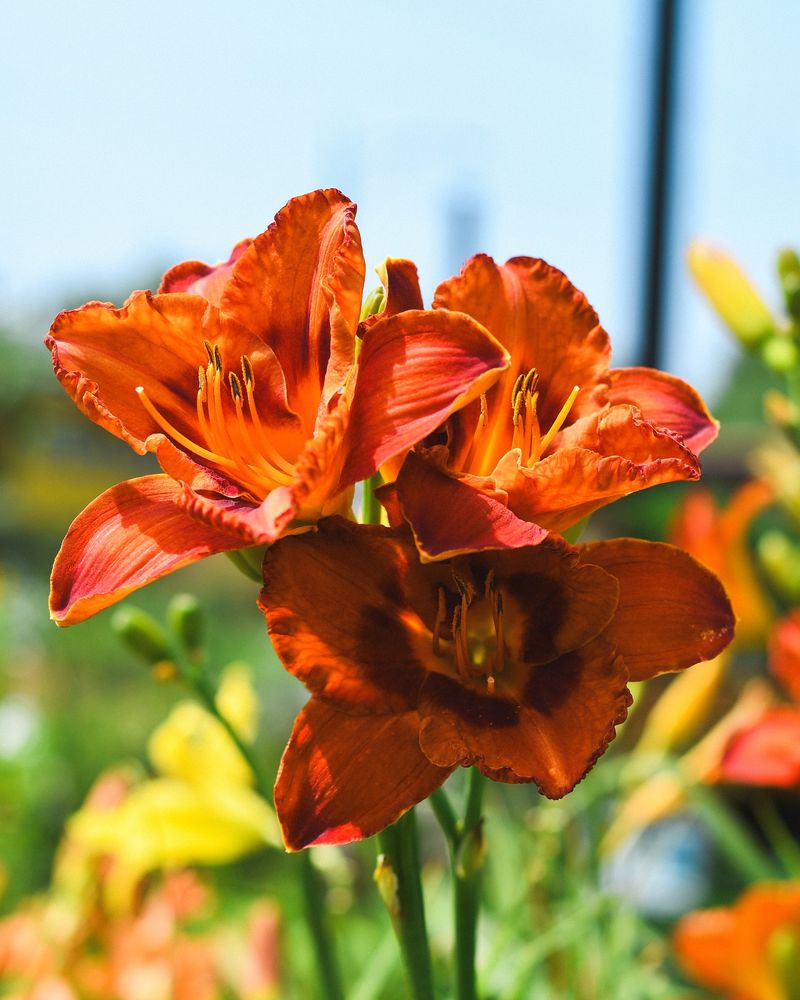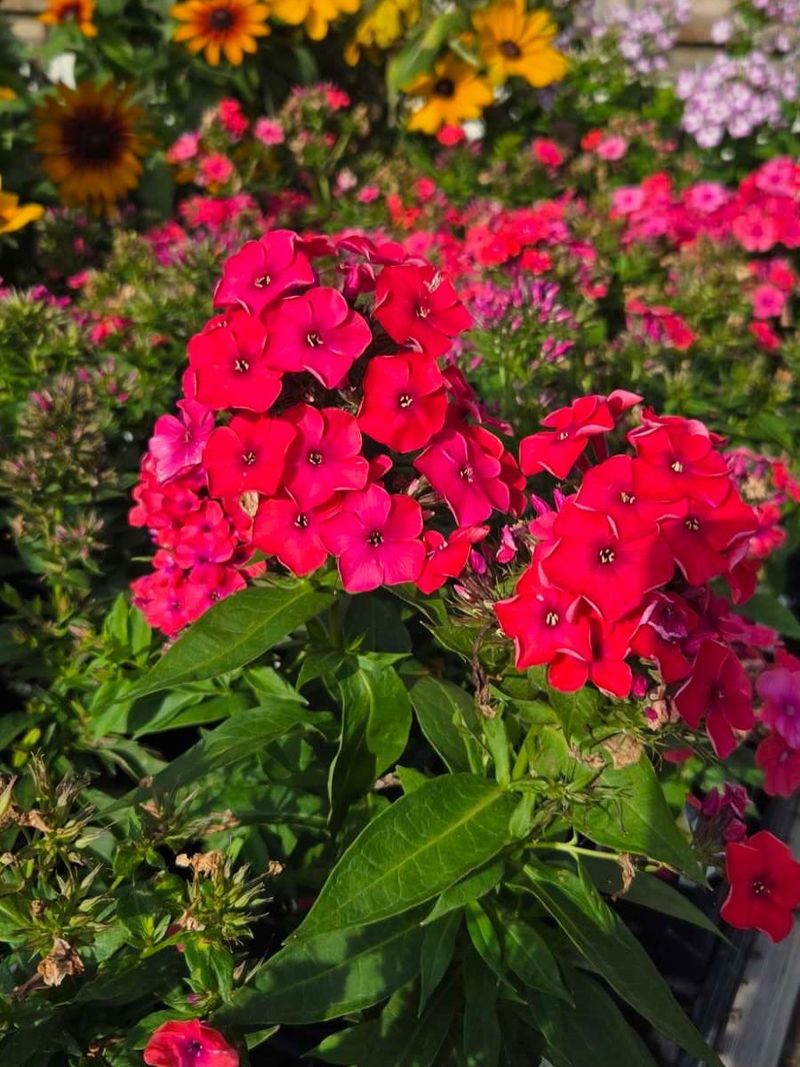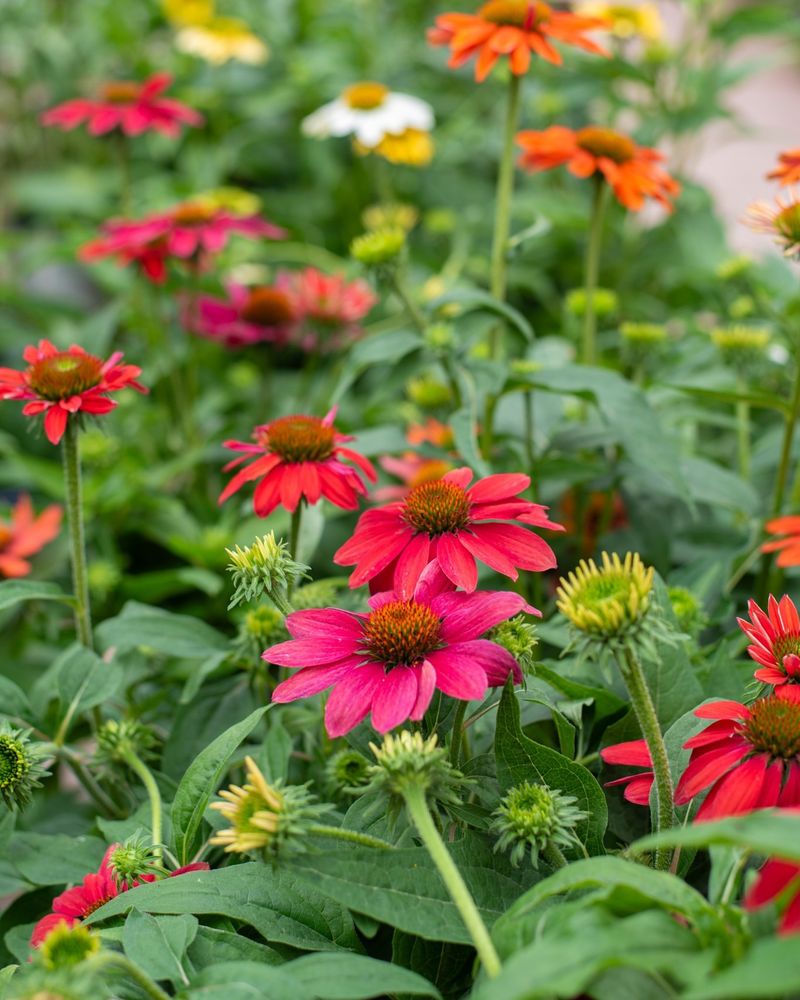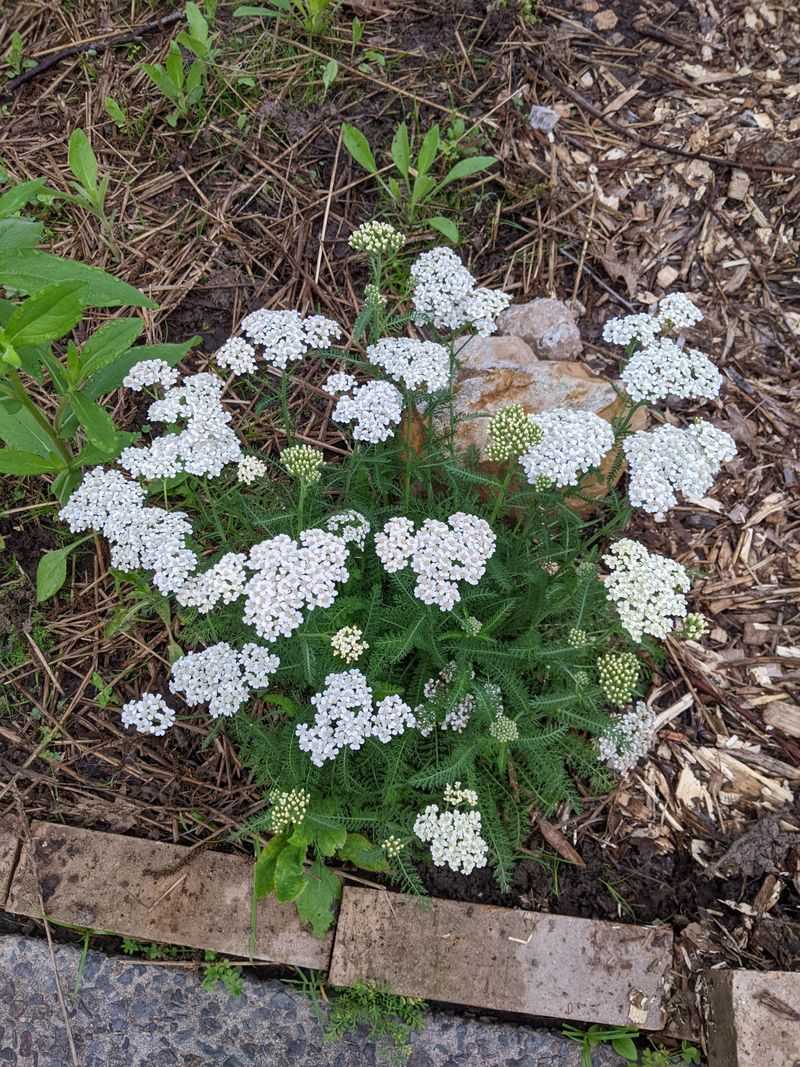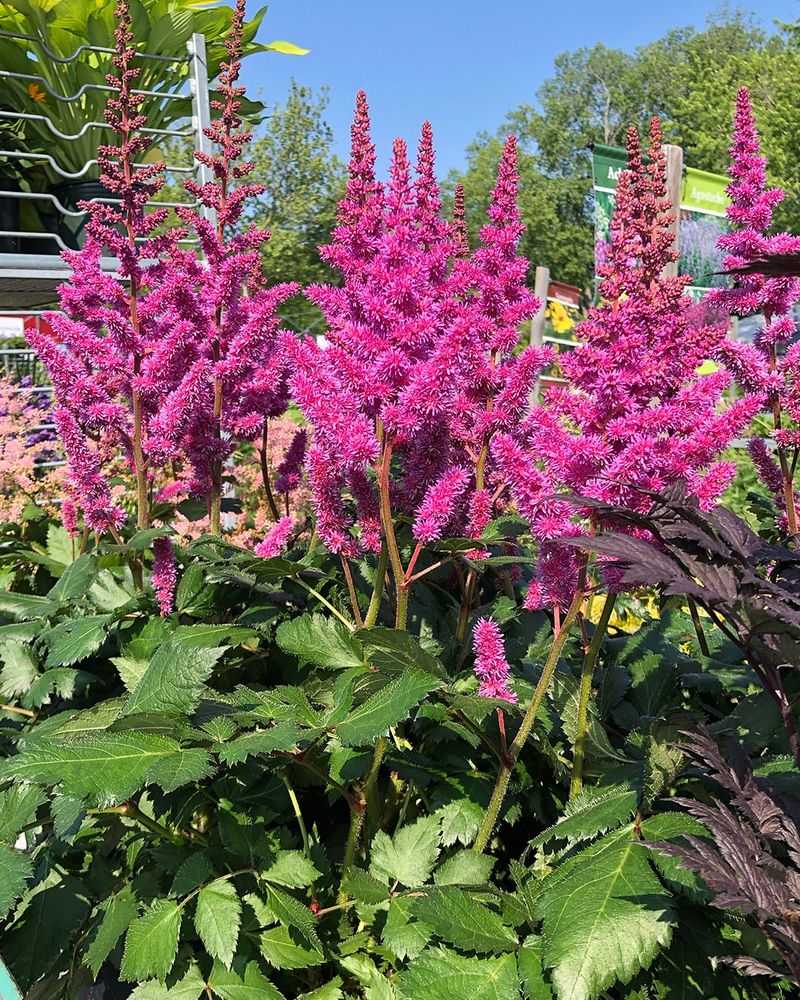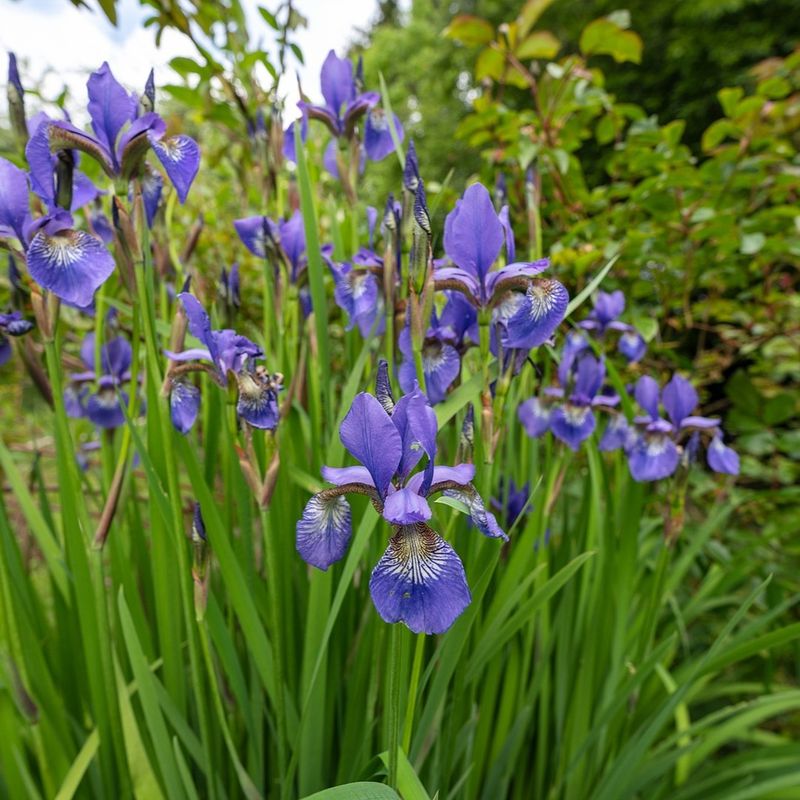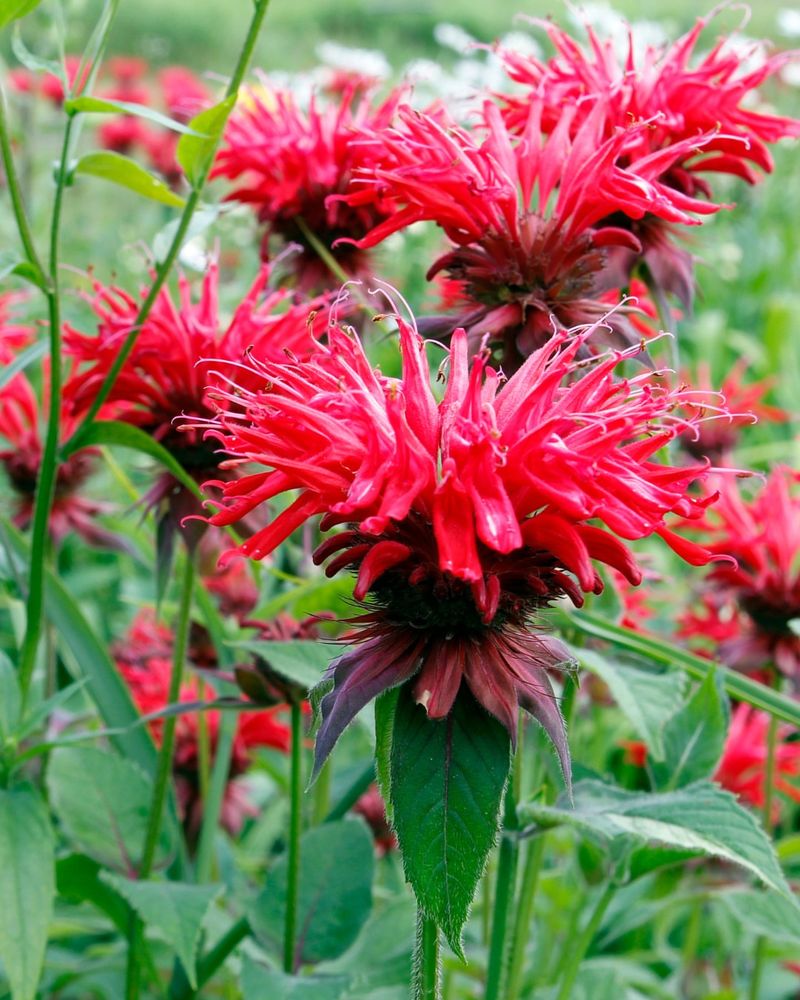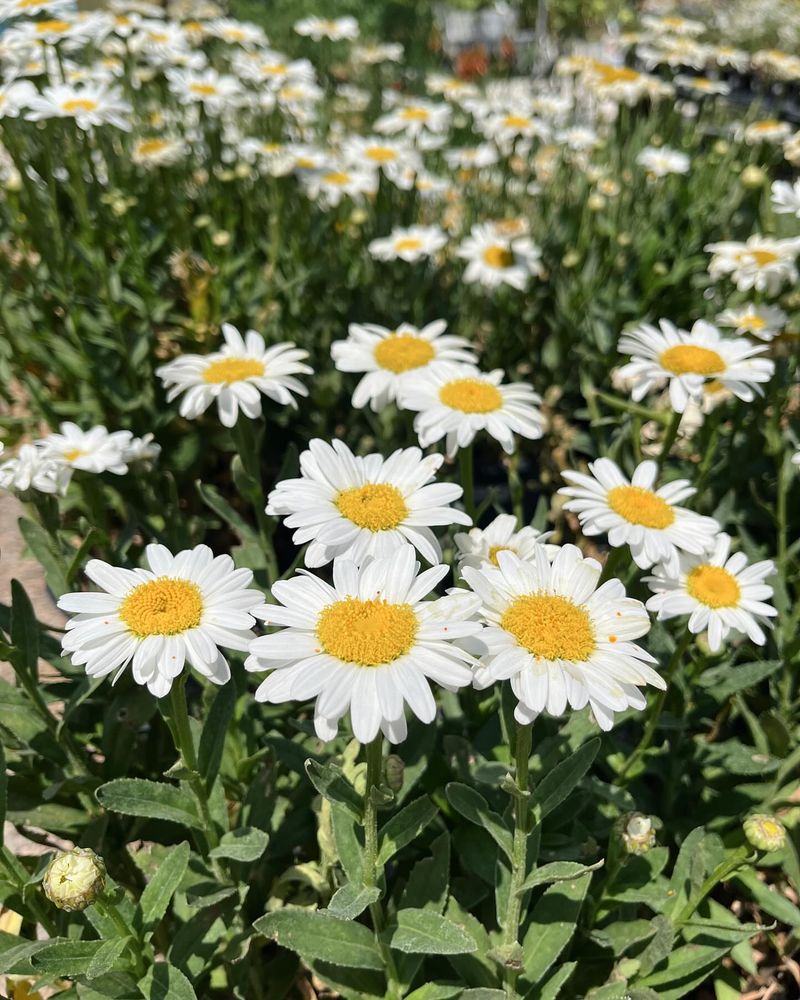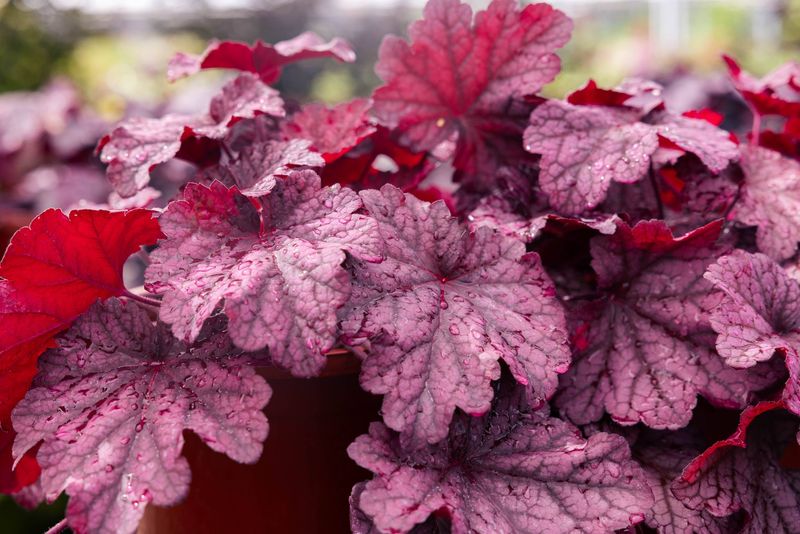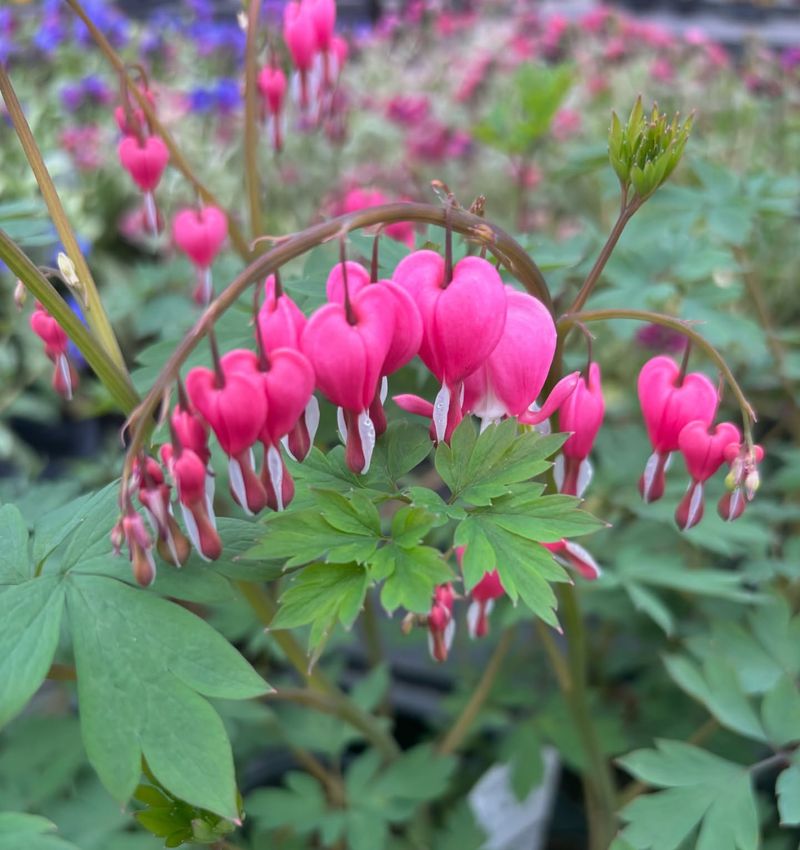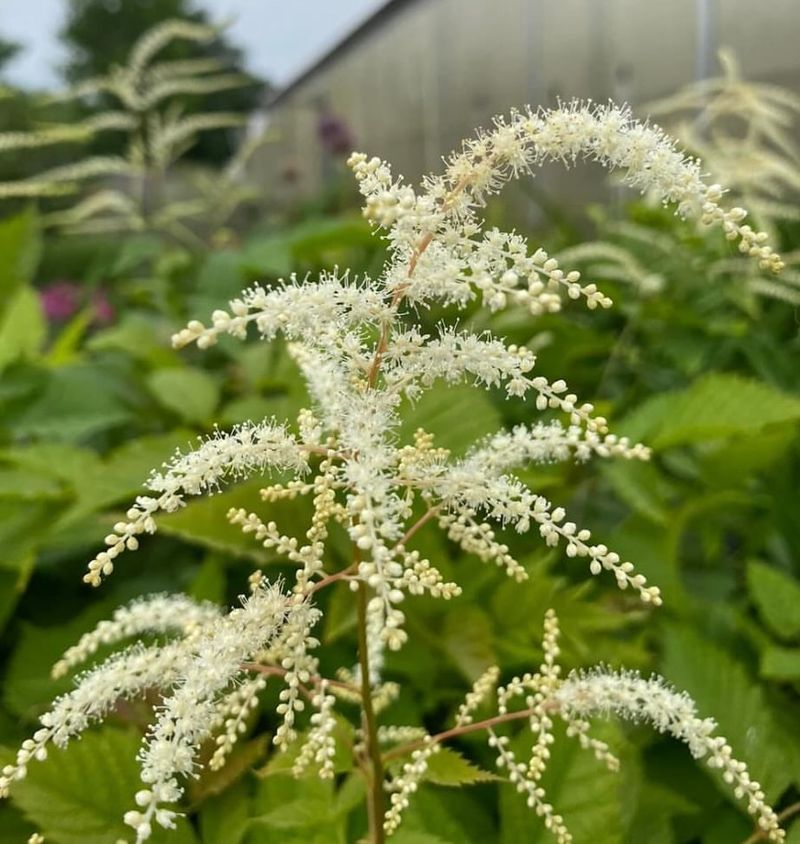Late summer is prime time for Wisconsin gardeners to divide perennials. Splitting overcrowded plants before Labor Day gives them enough time to establish roots before winter sets in.
Your garden will thank you with healthier growth and more blooms next season, plus you’ll get free plants to expand your garden or share with friends.
1. Bearded Iris
Bearded irises in Wisconsin gardens become overcrowded every 3–4 years, causing fewer blooms and potential disease problems. When dividing, look for firm, plump rhizomes with healthy fans of leaves.
Cut the fans to about 6 inches tall, then replant the rhizomes with the top barely visible above soil level. Space them about 12–18 inches apart to give them room to spread over time.
2. Black-Eyed Susan
Cheerful black-eyed Susans spread quickly and benefit from division every 3-4 years. You’ll notice the centers dying out while new growth appears around the edges—a clear sign they need splitting.
Dig up the entire clump and separate the healthiest sections using your hands or two garden forks back-to-back. Keep the outer portions with the strongest roots and discard the woody center for best results.
3. Hostas
Sturdy hostas rarely demand division, but splitting them every 4-5 years rejuvenates these shade-loving favorites. Morning hours work best for this task when plants are hydrated and less stressed.
Simply dig around the entire clump, lift it, and use a sharp spade or knife to cut it into sections. Each division should have several healthy leaves and a good portion of roots attached. Water thoroughly after replanting.
4. Daylilies
Vigorous daylilies form dense clumps that eventually compete for nutrients and moisture. After digging up the entire clump, shake off excess soil to reveal the crown and roots.
Using your hands or a garden fork, gently pull apart the natural divisions or cut through tough sections with a sharp knife. Each division should have at least 2-3 fans of leaves and healthy roots. Replant immediately at the same depth as before.
5. Garden Phlox
Tall garden phlox creates a spectacular summer show but needs division every 3-4 years to prevent overcrowding and improve air circulation. Poor air flow often leads to powdery mildew problems in Wisconsin’s humid summers.
Divide in early morning by digging up the entire clump and separating it into smaller sections with 3-5 shoots each. Discard the older center portions and replant the vigorous outer sections for healthier plants.
6. Coneflowers
Native coneflowers (Echinacea) develop extensive root systems that benefit from division every 4 years. Left undivided, the centers often die out while new growth emerges around the edges.
Use a garden fork to carefully lift the entire plant, preserving as many roots as possible. Split the clump into smaller sections using a sharp spade or knife. Each division should have several growing points and a good portion of roots.
7. Yarrow
Fast-spreading yarrow quickly forms large mats that crowd out neighboring plants. Division every 2-3 years keeps it vigorous and prevents it from taking over your garden beds.
Dig up the entire clump and pull apart sections by hand or cut with a sharp knife. Even small divisions with roots attached will establish quickly. Replant immediately, spacing plants 12-18 inches apart to allow for future growth.
8. Astilbe
Shade-loving astilbes form dense clumps that gradually lose vigor in the center. When blooms diminish and growth seems crowded, it’s time to divide—typically every 3-4 years.
After digging up the clump, use a sharp knife to cut through the thick, woody crown. Make sure each division has several eyes (growing points) and healthy roots. Wisconsin gardeners should replant immediately and water thoroughly to help them establish before fall.
9. Siberian Iris
Unlike their bearded cousins, Siberian irises form dense, fibrous root systems that become woody and less productive over time. When flowering decreases, usually every 4-5 years, division becomes necessary.
Dig deeply around the clump with a garden fork, then pry it up carefully. The root mass will be tough! Use a sharp spade or saw to cut manageable sections, each with fans of leaves and roots attached.
10. Bee Balm
Bee balm spreads quickly through underground runners, often becoming crowded within 2-3 years. When the center dies out or growth appears congested, it’s division time.
Dig up the entire patch and pull apart the outer, healthier portions by hand. Discard the woody center sections. Wisconsin gardeners should replant these divisions about 18 inches apart to give them room to spread naturally while attracting beneficial pollinators to your garden.
11. Shasta Daisies
Cheerful Shasta daisies need division every 2-3 years to maintain their vigor in Wisconsin gardens. You’ll notice when centers become woody and flowering decreases significantly.
After digging up the clump, break or cut it into smaller sections, each with several shoots and roots. Replant immediately, positioning the crown at soil level. Divisions taken before Labor Day will establish nicely before winter, rewarding you with abundant blooms next summer.
12. Coral Bells
Delicate-looking coral bells (Heuchera) gradually develop woody crowns that rise above the soil surface. When this happens, usually every 3-4 years, division rejuvenates the plants.
Carefully dig around and under the clump, then lift it gently. Cut through the crown with a sharp knife, ensuring each division has both leaves and roots. Replant with the crown just at soil level—not too deep or too shallow.
13. Bleeding Heart
Old-fashioned bleeding hearts benefit from division every 4-5 years, especially when growth becomes crowded. Wait until August when the foliage has yellowed naturally—perfect timing for Wisconsin gardeners.
Carefully dig around the plant and lift the entire clump. Gently separate the fleshy roots into sections, each with several eyes or buds. Replant immediately at the same depth, keeping soil consistently moist until established.
14. Goat’s Beard
Majestic goat’s beard creates dramatic garden presence but needs occasional division every 4-5 years. This Wisconsin-hardy perennial forms large clumps that benefit from rejuvenation when flowering diminishes.
Use a sharp spade to dig deeply around the plant, then pry it up carefully. The root mass will be substantial! Divide into manageable sections using a sharp knife or spade, ensuring each piece has several buds and roots.

